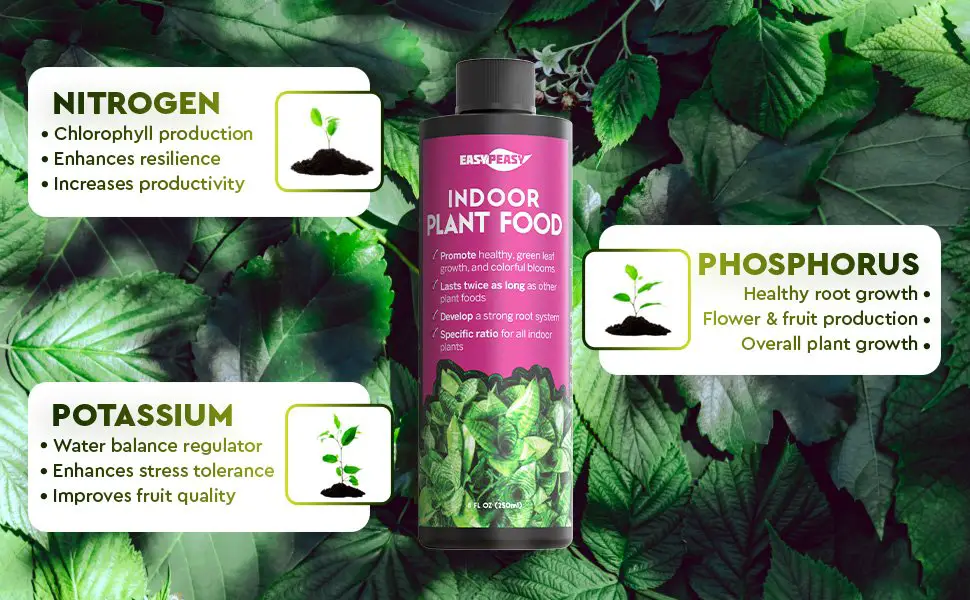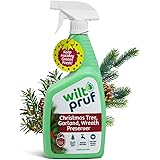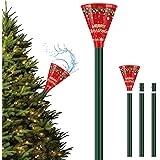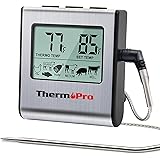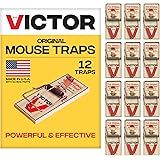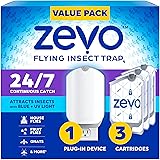Looking to enhance the vitality and beauty of your indoor plants? Look no further! Liquid chlorophyll for indoor plants is the perfect solution. This natural supplement provides a myriad of benefits, boosting the health and vibrancy of your leafy companions. Packed with nutrients and essential elements, liquid chlorophyll acts as a catalyst for photosynthesis, promoting robust growth and the production of oxygen.
In this article, we will delve into the wonders of liquid chlorophyll for indoor plants, discussing its advantages and how to integrate it into your plant care routine. Get ready to witness your plants thrive like never before!
Liquid Chlorophyll for Indoor Plants
Indoor plants can bring life and beauty to any space, whether it’s a cozy apartment or a bustling office. However, maintaining healthy indoor plants can be a challenge, especially when it comes to providing them with the essential nutrients they need.
One such nutrient is chlorophyll, the green pigment responsible for photosynthesis in plants. While plants naturally produce chlorophyll, supplementing their diet with liquid chlorophyll can have numerous benefits.
What is Liquid Chlorophyll?
Liquid chlorophyll is a concentrated form of chlorophyll that is derived from plants. It is usually extracted from green leafy vegetables like spinach, parsley, or wheatgrass. The extraction process involves breaking down plant cells and separating the chlorophyll from other components.
Liquid chlorophyll is available in various forms, including liquid drops, powders, or capsules. When used as a supplement for indoor plants, liquid chlorophyll is typically diluted with water and applied to the soil or sprayed onto the leaves.
Benefits of Using Liquid Chlorophyll for Indoor Plants
Using liquid chlorophyll as a supplement for indoor plants can provide several benefits that enhance their overall health and appearance. Let’s explore some of these benefits:
1. Enhanced Photosynthesis
Photosynthesis is the process by which plants convert sunlight into energy, using chlorophyll as the main catalyst. By providing plants with additional chlorophyll, you can boost their photosynthetic capacity. This, in turn, results in increased energy production, healthier foliage, and faster growth.
2. Improved Nutrient Absorption
Chlorophyll plays a crucial role in nutrient absorption by facilitating the movement of minerals and other essential elements throughout the plant. When indoor plants receive an adequate supply of liquid chlorophyll, their roots can absorb nutrients more efficiently, leading to stronger and lusher growth.
3. Detoxification and Air Purification
Indoor plants are known for their air-purifying abilities, removing toxins and pollutants from the surrounding environment. Liquid chlorophyll can enhance this natural detoxification process by promoting the breakdown and elimination of harmful substances.
As a result, the air quality in your indoor space can be significantly improved.
4. Increased Resistance to Stress
Indoor plants often face various stressors, including fluctuations in temperature, humidity, and light levels. Liquid chlorophyll acts as a natural stress reliever for plants, helping them cope with environmental changes more effectively. It strengthens their cell walls, increases their antioxidant capacity, and enhances their ability to withstand stressors.
5. Vibrant and Healthy Foliage
Liquid chlorophyll supplementation can contribute to the development of vibrant and healthy foliage in indoor plants. It promotes the synthesis of proteins and enzymes, which are essential for plant growth and leaf formation. As a result, you’ll notice lush, green leaves that are more resistant to yellowing or browning.
How to Use Liquid Chlorophyll on Indoor Plants
To use liquid chlorophyll as a supplement for your indoor plants, follow these simple steps:
1. Dilute the Liquid Chlorophyll
Mix the recommended dosage of liquid chlorophyll with water according to the instructions on the product label. The ratio may vary depending on the concentration of the liquid chlorophyll and the specific plant species.
2. Water or Spray the Solution
Apply the diluted liquid chlorophyll to the soil around the base of the plant, making sure it is evenly distributed. Alternatively, you can spray the solution onto the leaves, ensuring complete coverage.
3. Observe and Adjust
Monitor your plant’s response to the liquid chlorophyll supplementation. Adjust the dosage or frequency of application if necessary, taking into account the plant’s individual needs and any specific instructions provided by the manufacturer.
Choosing the Right Liquid Chlorophyll
When selecting a liquid chlorophyll product for your indoor plants, consider the following factors:
1. Source of Chlorophyll
Ensure that the liquid chlorophyll is derived from natural sources, such as green leafy vegetables. Avoid products that contain synthetic or artificial ingredients.
2. Concentration and Purity
Check the concentration and purity of the liquid chlorophyll. Higher concentrations may require more precise dilution and careful application. Look for products that are free from additives or fillers.
3. Compatibility with Indoor Plants
Different plant species may have varying requirements and sensitivities. Choose a liquid chlorophyll product that is suitable for indoor plants and compatible with the specific plants you have.
4. User Reviews and Recommendations
Read reviews and recommendations from other indoor plant enthusiasts to get insights into the effectiveness and quality of different liquid chlorophyll products. Look for reputable brands with positive customer feedback.
Precautions and Potential Risks
While liquid chlorophyll can be beneficial for indoor plants, it’s important to exercise caution and follow these precautions:
- Avoid over-application of liquid chlorophyll, as excessive amounts may cause harm to plants.
- Consult plant experts or horticulturists if you have specific concerns or questions regarding the use of liquid chlorophyll on certain plant species.
- Store liquid chlorophyll in a cool, dark place to maintain its potency.
- Always follow the instructions provided by the manufacturer for the recommended dosage and application method.
- If your plant shows signs of adverse effects, such as wilting or yellowing, discontinue the use of liquid chlorophyll and seek appropriate plant care advice.
Incorporating liquid chlorophyll as a supplement for your indoor plants can provide numerous benefits, including enhanced photosynthesis, improved nutrient absorption, detoxification, increased stress resistance, and vibrant foliage.
By following the recommended guidelines and selecting the right liquid chlorophyll product, you can optimize the health and vitality of your indoor plants. Remember to monitor your plants’ response and consult experts if needed to ensure their well-being.
So, why not give liquid chlorophyll a try and see the difference it can make in the beauty and overall health of your indoor plant oasis?
Frequently Asked Questions (FAQs)
Liquid chlorophyll is a concentrated form of chlorophyll, the pigment responsible for photosynthesis in plants.
When used as a supplement for indoor plants, it can provide numerous benefits such as enhancing photosynthesis, promoting healthy growth, boosting nutrient absorption, and increasing the overall vitality of the plants.
To use liquid chlorophyll for indoor plants, dilute the recommended amount in water according to the instructions provided on the product packaging.
Then, either spray the diluted solution onto the leaves of the plants or add it to the water used for regular watering. Follow the suggested frequency of application for best results.
Yes, liquid chlorophyll can be used on a wide variety of indoor plants, including but not limited to leafy greens, flowering plants, herbs, and decorative foliage.
However, it is always a good idea to check the specific requirements and compatibility of the plant species with liquid chlorophyll before application.
Liquid chlorophyll is generally safe for indoor plants when used as directed. However, it is important to follow the recommended dosage and application instructions provided by the manufacturer. Overusing liquid chlorophyll may lead to adverse effects on plant health, so it is crucial to use it in moderation.
No, liquid chlorophyll does not replace the need for sunlight for indoor plants. While it can enhance photosynthesis, indoor plants still require an adequate amount of natural or artificial light to thrive.
Liquid chlorophyll acts as a supplement, supporting the plant’s natural processes and optimizing their growth potential.
Yes, liquid chlorophyll can be used for plants grown hydroponically. In fact, it is particularly beneficial for hydroponic plants as it helps to improve nutrient absorption and overall plant health. Follow the instructions for dilution and application provided by the manufacturer to ensure proper usage.
While liquid chlorophyll is generally safe to use, it is recommended to avoid applying it to plants that are experiencing stress or are in a fragile state. Additionally, ensure that the product is stored properly, away from direct sunlight and extreme temperatures.
Always read and follow the instructions provided by the manufacturer for the best results and safety precautions.
Yes, liquid chlorophyll can be used in combination with other plant fertilizers. However, it is advisable to follow the guidelines provided by the manufacturer of both the liquid chlorophyll and the fertilizer to determine the appropriate application methods and avoid any potential adverse reactions.
Final Thoughts
In conclusion, liquid chlorophyll is a beneficial supplement for indoor plants. It helps to enhance their growth, improve their overall health, and increase their resistance to diseases and pests. By adding liquid chlorophyll to your plant care routine, you can ensure that your indoor plants receive the necessary nutrients for optimal growth.
With its easy application and quick absorption, liquid chlorophyll proves to be an efficient solution for plant owners. So, if you want to boost the health and vitality of your indoor plants, consider incorporating liquid chlorophyll into your plant care regimen.
Auto Amazon Links: No products found.
Perfect Plants Christmas Tree Saver 8oz. | Easy Use Xmas Tree Preserver Food | Have Healthy Green Christmas Trees All Holiday Season
$9.97 (as of November 25, 2025 23:26 GMT +00:00 - More info- Product prices and availability are accurate as of the date/time indicated and are subject to change. Any price and availability information displayed on [relevant Amazon Site(s), as applicable] at the time of purchase will apply to the purchase of this product.
Wilt-Pruf® Christmas Tree/Cutting Preserver Spray |Preserves Christmas Trees, Wreaths, Garlands, Cuttings and Carved Pumpkins | Reduces Needle Drop | Keeps Cut Trees Fresh Longer | Natural (32 oz)
$21.99 (as of November 25, 2025 23:26 GMT +00:00 - More info- Product prices and availability are accurate as of the date/time indicated and are subject to change. Any price and availability information displayed on [relevant Amazon Site(s), as applicable] at the time of purchase will apply to the purchase of this product.
Christmas Tree Watering Funnel – 39 Inch Adjustable 3-Section Design, Reusable & Spill-Free, Easy Watering for Real Christmas Trees
$10.70 (as of November 25, 2025 23:26 GMT +00:00 - More info- Product prices and availability are accurate as of the date/time indicated and are subject to change. Any price and availability information displayed on [relevant Amazon Site(s), as applicable] at the time of purchase will apply to the purchase of this product.
HoHoHoH2o Automatic Christmas Tree Watering System Device, Santa’s Tree Helper Keeps Your Christmas Tree Healthy and Fresh, Refillable 2.5 gallons Capacity Box - Silver/Festive
$99.95 (as of November 25, 2025 23:26 GMT +00:00 - More info- Product prices and availability are accurate as of the date/time indicated and are subject to change. Any price and availability information displayed on [relevant Amazon Site(s), as applicable] at the time of purchase will apply to the purchase of this product.
IPOOLTENG Christmas Tree Watering Funnel 3 Tube 1 Funnels 40 Inch - 3 Section Plastic Christmas Tree Funnel Waterer, Long Funnels for Watering Trees, No More Bending to Water
$13.59 (as of November 25, 2025 23:26 GMT +00:00 - More info- Product prices and availability are accurate as of the date/time indicated and are subject to change. Any price and availability information displayed on [relevant Amazon Site(s), as applicable] at the time of purchase will apply to the purchase of this product.
ThermoPro TP16 Large LCD Digital Cooking Food Meat Thermometer for Smoker Oven Kitchen BBQ Grill Thermometer Clock Timer with Stainless Steel Temperature Probe
$17.99 (as of November 26, 2025 14:50 GMT +00:00 - More info- Product prices and availability are accurate as of the date/time indicated and are subject to change. Any price and availability information displayed on [relevant Amazon Site(s), as applicable] at the time of purchase will apply to the purchase of this product.
Zevo Flying Insect Trap Official Refill Cartridges - Fits Both Zevo Trap & MAX Indoor Fly Trap - Authentic Trap+Lock Technology to Catch Gnats, House & Fruit Flys (4 Official Refill Cartridges)
$13.47 (as of November 26, 2025 14:50 GMT +00:00 - More info- Product prices and availability are accurate as of the date/time indicated and are subject to change. Any price and availability information displayed on [relevant Amazon Site(s), as applicable] at the time of purchase will apply to the purchase of this product.
Victor Mouse Traps M150-12, Metal Pedal, Sustainably Sourced FSC Wood, Wooden Mouse Traps, 12 Metal Pedal Traps
$9.79 (as of November 26, 2025 14:50 GMT +00:00 - More info- Product prices and availability are accurate as of the date/time indicated and are subject to change. Any price and availability information displayed on [relevant Amazon Site(s), as applicable] at the time of purchase will apply to the purchase of this product.
Zevo Flying Insect Trap & 3 Refill Cartridges - Plug in Fly Trap & Indoor Bug Catcher for Gnats, House & Fruit Flies - Blue & UV Light Technology, Mess-Free Alternative to Bug Zapper
$25.96 (as of November 26, 2025 14:50 GMT +00:00 - More info- Product prices and availability are accurate as of the date/time indicated and are subject to change. Any price and availability information displayed on [relevant Amazon Site(s), as applicable] at the time of purchase will apply to the purchase of this product.
TERRO Ant Killer Bait Stations T300B - Liquid Bait to Eliminate Ants - Bait System - 12 Count Stations for Effective Indoor Ant Control
$10.86 (as of November 26, 2025 14:50 GMT +00:00 - More info- Product prices and availability are accurate as of the date/time indicated and are subject to change. Any price and availability information displayed on [relevant Amazon Site(s), as applicable] at the time of purchase will apply to the purchase of this product.

